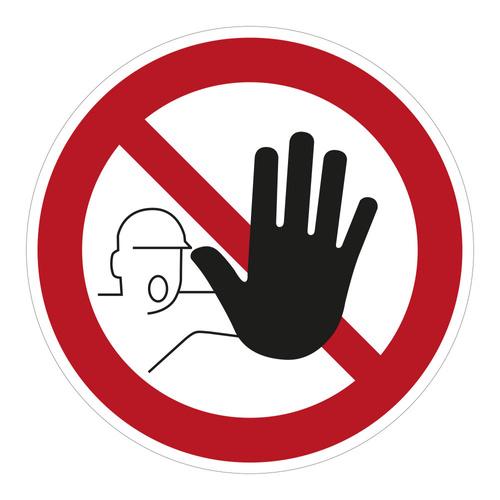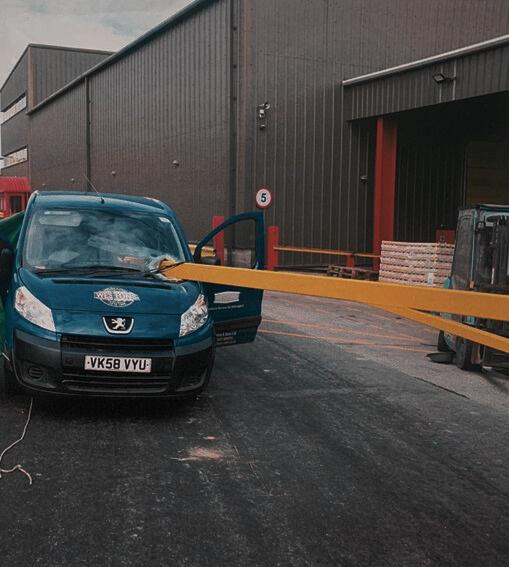







Welcome to Ceres Rural’s Health & Safety Bulletin. Each quarter, we update you on industry news, topical issues, and safety alerts with the aim of supporting you in achieving best practice on your farm or estate. This edition explains the need to prevent or control exposure to metalworking fluids. It considers the requirements for display screen equipment that affects many farm and estate offices. It continues by exploring the requirements for health and safety signage before commenting on the risks associated with changing wheels on agricultural machinery and steps to follow to ensure the health and safety of all involved. It sets out some key considerations when working with mowers and toppers, and concludes with four case studies of recent workplace deaths or injuries with learning outcomes for similar situations in agriculture and rural industries.
Metalworking fluids (MWFs) are neat oils or water-based fluids used during the machining and shaping of metals to provide lubrication and cooling. Exposure to MWFs can cause irritation of the skin or dermatitis; and lung diseases such as occupational asthma, occupational hypersensitivity pneumonitis, bronchitis, irritation of the upper respiratory tract and other breathing difficulties.
MWFs are mostly applied by continuous jet, spray or hand dispenser and can affect health if the mist is inhaled, through direct contact with unprotected skin, through cuts and abrasions or other broken skin, or ingestion if eating or drinking without washing hands They will particularly support bacterial and fungal growth in warm temperatures and areas of low flow or stagnation, such as lathes or bandsaws in farm or estate workshops that are used infrequently.
The Control of Substances Hazardous to Health Regulations 2002 (COSHH) require exposure to MWFs by inhalation, skin contact or ingestion to be prevented where reasonably practicable or adequately controlled. This should include:
Maintaining fluid quality and controlling bacterial contamination.
Minimising skin exposure to fluids
Preventing or controlling airborne mists
Carrying out health surveillance where exposure to fluids or mists occurs
The Health & Safety Executive recommend routine testing of MWFs and plotting results such as pH, concentration and bacteria levels on a chart such that trends can be easily tracked and problems with fluid quality identified quickly. Following inspections carried out in recent months, they comment that:
“it is clear that not enough is being done to protect workers and keep them safe and healthy lung problems and irritated skin don’t have to be associated with working with metalworking fluid if you take the right precautions. It is really important that control measures and fluid quality checks are in place to keep workers healthy. Health checks are essential to identify signs of ill health early.”
Further information is available at:
www hse gov uk/metalworking/
www.hse.gov.uk/metalworking/ecoshh
www.hse.gov.uk/pubns/indg365.pdf

While farm and estate health and safety matters frequently focus on machinery, workshops and grain stores, consideration must also be given to the office working environment including working with display screen equipment (DSE). Health risks include fatigue, eye strain, upper limb problems and back pain from overuse or improper use of DSE.
Information available from the Health & Safety Executive details how to comply with the Health & Safety (Display Screen Equipment) Regulations 1992 as amended by the Health & Safety (Miscellaneous Amendments) Regulations 2002. DSE are devices or equipment that have an alphanumeric or graphic display screen and includes display screens, laptops, touch screens and other similar devices and emerging technologies The DSE Regulations exist to protect the workers –employees and self-employed – who habitually use DSE for the purposes of an employer’s undertaking as a significant part of their normal work.
Employers providing DSE must:
Analyse workstations to assess and reduce risks
Make sure controls are in place.
Provide information and training.
Provide eye and eyesight tests on request and special spectacles if needed.
Review the assessment when the user or DSE changes
Workers must be consulted and after a suitable and sufficient analysis of workstations is carried out to assess the risks to which users are exposed, those risks must be reduced to the lowest extent reasonably practicable. This includes overcoming postural problems by adjusting the workstation; visual problems by repositioning the screen or using blinds to avoid glare; and fatigue and stress by managing the above and ensuring software is appropriate to the task.
Further information is available at: www.hse.gov.uk/msd/dse and www hse gov uk/pubns/indg36 pdf and www hse gov uk/pubns/ck1 htm

Health and safety signs are essential to maintain a safe working environment and ensure compliance with UK law. The Health & Safety (Safety Signs & Signals) Regulations 1996 require employers to ensure that safety signs are provided and maintained in circumstances where there is a significant risk to health and safety that has not been removed or controlled by other methods. The Regulations are clear however, that safety signs are not a substitute for other means of controlling risks, but are to warn of any remaining risk or instruct workers ofthemeasurestotakeinrelationtotheserisks.
Safety signs must be:
Compliant with BS EN ISO 7010
Properly maintained and in good condition.
Clearly visible and legible.
Positioned in a suitable location.
Various types of safety signs may be encountered:

Prohibiting behaviour likely to increase or cause danger

Warning of a hazard or danger
Prescribing specific behaviour
Giving information on exits or first aid facilities
Safety signs must be properly maintained so that they can perform the function for which theyareintended.
It is important that workers are aware of and understand the meaning of safety signs. Although most are self-explanatory, new, young or inexperienced workers may be unfamiliar with their meaning. It is important that the meaning is explained and that workers are aware oftheconsequencesofnotfollowingthewarningorinstructiongivenbythesign.
In certain situations, the requirements of the Regulations will overlap with other areas of statute. Examples include the need to mark stores containing dangerous substances under the Dangerous Substances (Notification & Marking of Sites) Regulations 1990, and the need tomarklowrisksoffallsundertheWorkatHeightRegulations2005.

With the changeable (and sometimes wet!) weather conditions this spring, farm machinery may have its wheels changed for operations such as de-stoning, drilling, fertiliser spreading and spraying. Despite the challenges of the season, it is worth remembering that serious accidents – including fatalities – have been caused by unsafe practices during wheel changing and when inflating tyres. In 2022, a 23-year-old farm worker in North West England was killed while fitting a tractor tyre: he was in the process of inflating the tyre when it exploded, causing serious head injuries.
When using jacks to lift or support vehicles or machines:
Use the correct jack, capable of supporting the load imposed on it.
Use the correct jacking point, shown on the machine or in the operator’s manual.
Position axle stands to give additional support.
Chock the other wheels to prevent movement.
Carry out the work on firm, level ground.
Wheels should only be changed by competent and experienced workers. Take extra care with split-rim wheels as these present additional hazards. If in doubt, seek help from a specialist. Do not use ‘unrestricted’ airlines (without a gauge or pressure control device) or valve connectors that require the operator to hold them in place when inflating tyres. Tyres can explode if they are not inflated safely. Use airline hoses long enough to allow the operator to stay outside the likely explosion path during inflation. Wheel cages and similar devices can help reduce the risk of injury.
Lastly, the average size of wheels has increased significantly, which creates a greater risk of manual handling injuries because they are heavier and more cumbersome to hold and manoeuvre. Changing large wheels can be made easier with an appropriate mechanical handling trolley, which is now a feature of many farm and estate workshops.


As grass buffer strips, field corners and leys grow in the spring, mowers and toppers will make their return to manage these areas. The greatest risk of injury comes from contact with moving parts including drive mecha drive mechanisms, rotating power-take off shafts, blades and flails, and material ejected by the machine. Other risks created by this type of work include contact with moving parts when clearing blockages, being trapped or crushed while moving machinery between work and transport positions, being crushed below a raised machine while replacing blades or carrying out other maintenance, being struck or run over by the tractor and mower, and overturns when working on banks or slopes.
Guarding should prevent contact with any dangerous parts of machinery when in motion or use. All guards should be in position, correctly fitted and secure before starting work. Do not continue if guards are damaged or missing. The power take-off shaft should be fully enclosed in a guard along its entire length, and the protective skirt should be in place and in good condition to stop objects or debris from being ejected.
Before carrying out maintenance or adjustments on mowers and toppers, the Safe Stop procedure should be followed. Always allow sufficient run-down time for blades and cutting mechanisms before approaching or working on machines. Provide instructions, information and training to workers to ensure they understand the risks they may face, measures in place to control the risks, and how to follow any emergency procedures.
When maintaining mowers and toppers, follow the manufacturer's instructions for replacing blades and flails. Ensure replacement parts meet the manufacturer's specifications. Always use a purpose-made prop or stand to carry out maintenance work safely beneath the mower or topper – do not rely on the tractor’s hydraulics alone. Suitable personal protective equipment should be available and worn.
Further information is available at: www.hse.gov.uk/pubns/ais25.pdf


The following are examples of recent case studies involving workplace deaths or injuries, together with the ramifications of the subsequent prosecution in each instance and learning outcomes for similar situations in agriculture and rural industries.
A cider manufacturer was fined after a worker who was driving a van out of the firm’s site was killed when the end of a security barrier speared through the vehicle’s windscreen and fatally crushed him. The HSE’s investigation found that the company had installed the barrier a month earlier but failed to undertake a suitable and sufficient risk assessment and to implement a safe system of work to ensure the barrier could be secured safely when open and closed.
The company pleaded guilty to breaching Regulation 3(1) of the Management of Health & Safety at Work Regulations 1999 and Section 2(1) of the Health & Safety at Work etc. Act 1974. It was fined £1.4 million and ordered to pay costs of £26,757.
The HSE commented that, “horizontal barriers can be dangerous – but deaths are extremely preventable. The guidance for those operating barriers like this… is clear and its vital to make sure the barriers are adequately secured at all times whether open or shut.”
Further information is available at: www.hse.gov.uk/workplacetransport/barriers.htm
Two companies were fined after a worker who was using ropes to install a lightning protection system to the front of an office block being converted into flats, fell from the roof of the building and died. The HSE’s investigation found that the companies failed to ensure that the work was properly planned and to manage and monitor the work to ensure it was carried out safely. Due consideration had not been given to safer methods of working at height such as the use of scaffolding or a mobile elevating work platform (MEWP) and the worker was given no instruction or safe means of getting the equipment down from the roof.
The companies were found guilty of breaching Regulations 13(1) and 15(2) of the Construction (Design & Management) Regulations 2015 and were fined £615,000 and ordered to pay costs of £73,448.
The HSE commented that, “it is vitally important that work at height is properly planned; where it isn’t, the risks can lead to the most serious of consequences.”
Further information is available at: www.hse.gov.uk/agriculture/topics/falls.htm
A yacht maker was fined after a worker sustained life changing injuries including 12 broken ribs and a severed right arm, when a staging platform weighing approximately one tonne toppled over and fell on him. The 54-year-old also suffered bleeds on the brain and hospitalisation for several months. The HSE’s investigation found that the platform fell due to one of the front wheels hitting a divot in a concrete surface.
The company pleaded guilty to breaching Regulation 2(1) of the Health & Safety at Work etc. Act 1974 and was fined £600,000 and ordered to pay costs of £9,146.
The HSE commented that, “the company should have had measures in place to ensure that the mobile staging was never pushed through the yard by hand… the failure to have in place a safe system of work resulted in a life changing injury to a loyal employee who had worked for the company for 26 years.”
Being struck by an object remains a common and recurring cause of fatality in agriculture, with four such deaths being recorded in 2022-23.

A bedding manufacturer was fined after two of its employees were seriously injured and underwent amputations as a result of separate incidents at its site in Rochdale.
The first incident in 2020 involved a 32 year old who was instructed to clean the measuring wheel on a cutting machine. He climbed onto the conveyor belt, but the machine had not been properly isolated from all sources of power and the machine’s clamp came down, trapping the employee’s left hand and causing the circular saw to move. Although another employee pressed the emergency stop button, the victim had three fingers amputated from his left hand.
The second incident in 2021 involved a 51 year old who noticed a fallen casing and attempted to place it back on the quilting machine while it was being operated. His gloves became entangled in the machine, causing his right hand to be dragged in. This caused lacerations and crush injuries to his right hand and resulted in the tips of two fingers being amputated.
The company pleaded guilty to breaching Section 2(1) of the Health & Safety at Work etc. Act 1974 and Regulation 11 of the Provision & Use of Work Equipment Regulations 1998 and was fined £251,250 and ordered to pay costs of £6,863.
The HSE commented that, “these injuries were serious and avoidable, the risk should have been identified. Employers should make sure they properly assess and ensure that access to dangerous parts of machinery are prevented.”
Contact with machinery is a recurring cause of fatalities in agriculture, with an average of four deaths per year in the last five years.
Further information is available at: www.hse.gov.uk/pubns/priced/l22.pdf

If you would like to discuss any topics raised in this issue of the Health & Safety Bulletin, do not hesitate to contact our Healthy & Safety Guidance expert.

ROBERTGAZELY PARTNER|SAFFRONWALDEN
robert.gazely@ceresrural.co.uk 07592 041 617
